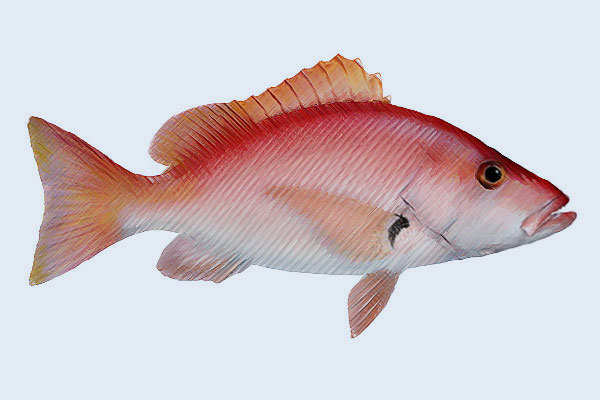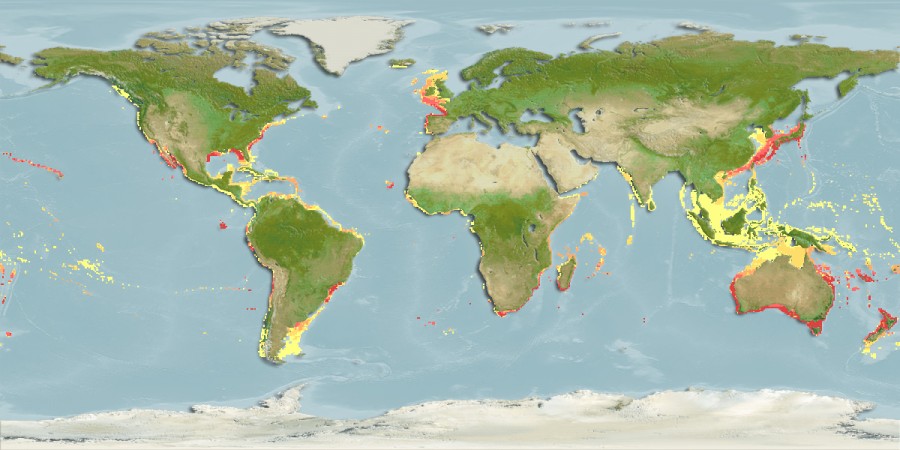Snapper
Classification / Names
Actinopterygii (Ray-finned fishes) > Perciformes (Perch-likes) > Sparidae (Porgies)

Size / Weight / Age
Max length: 130 cm
Common length: 40.0 cm
Max published weight: 20.0 kg
Max reported age: 35 years
Length at first maturity: Lm 30.0, range 20 – 28 cm
Environment
Reef-associated; oceanodromous; marine; brackish; depth range 0 – 200 m
Climate / Range
Subtropical; 44°N – 47°S
Description
There are 185 snapper species in the family, which care found worldwide. The species most commonly marketed in the U.S. are listed below.
Only Species in the lutjanid family can legally be called snappers. Numerous other fish are called snappers, and several species may be mislabeled as snapper and sold to unwary buyers. Snapper skin is the best way to verify the real product. Most fillets, for that reason are sold skin-on.
Lane Snapper
(L. synagris) has reddish skin marked with horizontal yellow stripes. Because of the dark spot above the lateral line under the soft dorsal fins, this fish is also known as spot snapper.
Red Snapper
(L. campechanus) is the only fish recognized by the FDA as American red snapper. It can be identified by its pink skin and bright-red eyes. It averages 4 to 6 pounds and is harvested mostly off Florida. A Southern relative (L. purpureus) is similar in size, color and taste. It is found in the Gulf of Mexico, in the Caribbean and south to Venezuela. It is not always handled as carefully as American red snapper.
Silk Snapper
(L. vivanus) has reddish skin, yellow fins and distinctive yellow eyes, giving it the alternate name yellow-eyed snapper. It may be mixed with shipments of American red snapper and lane snapper.(Alopias vulpinus) has meat that ranges in hue from white to tan and is similar to swordfish. A pink blood line runs around the edges.
Product Forms
Fresh – Whole, drawn; skin-on fillets, scales removed; fingers; cheeks; throats Frozen – Whole, drawn; skin-on fillets, scales removed
Distribution
Indo-Pacific: widely occurring off New Zealand, Australia, Philippines, Indonesia, China, Taiwan, and Japan. Populations in the northern and southern hemispheres are independent and isolated but were similar enough to be declared one and the same species.
